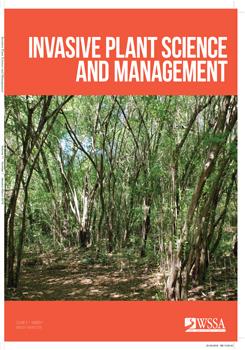Ventenata [Ventenata dubia (Leers) Coss.], an invasive winter annual grass, significantly reduces forage production in grassland systems and displaces species within both perennialand annual-dominated grasslands within the Inland Northwest. The range of V. dubia is expanding into sagebrush steppe communities, an expansive habitat critical for forage production, wildlife, and recreation. Currently, there is limited knowledge of V. dubia's distribution and abundance within sagebrush steppe communities. We performed field surveys at 15 locations in sagebrush steppe rangelands in southern Idaho and eastern Oregon to assess where V. dubia occurs, with the aim of providing insight about its niche in this new habitat. Specifically, we evaluated biotic and abiotic factors of the plant community as indicators of V. dubia presence. We also correlated species diversity measures with no, low (<12.5%), and high (>12.5%) V. dubia cover. Though widely distributed throughout the study region, V. dubia only appeared in 45% of the 225 plots, and foliar cover was typically less than 50%. It was primarily found in ephemerally wet microhabitats. Species richness and the Shannon diversity index were lowest in plots with high V. dubia cover. Nonmetric multidimensional scaling analysis revealed that V. dubia and medusahead [Taeniatherum caput-medusae (L.) Nevski] were closely associated. Furthermore, chi-square indicator analysis showed that T. caput-medusae was more prevalent, while mountain big sagebrush [Artemisia tridentata Nutt. spp. vaseyana (Rydb.) Beetle] was less prevalent, in plots containing V. dubia. Abiotic factors that explained variation in V. dubia abundance included rock cover, soil depth, and a north/south aspect. Higher V. dubia cover also correlated with higher clay content and lower phosphorus and potassium concentrations in the soil. We suggest that at this point, detection survey efforts to locate incipient infestations of V. dubia in sagebrush steppe communities should focus on moist areas and sites susceptible to invasion by T. caput-medusae.
How to translate text using browser tools
1 March 2018
Indicators of Ventenata (Ventenata dubia) Invasion in Sagebrush Steppe Rangelands
Lisa C. Jones,
Nicholas Norton,
Timothy S. Prather
ACCESS THE FULL ARTICLE
abundance
indicator species
invasive
range expansion
Shannon diversity
soil nutrients
species richness





